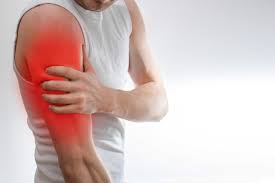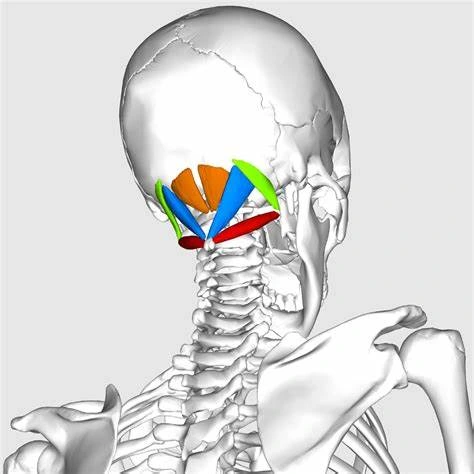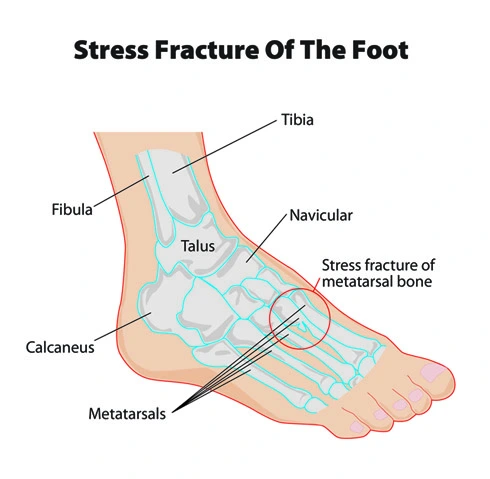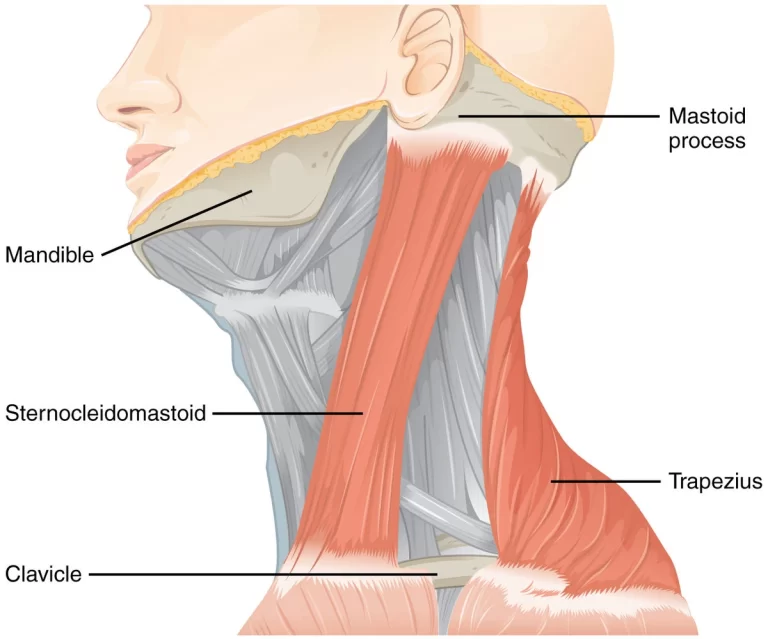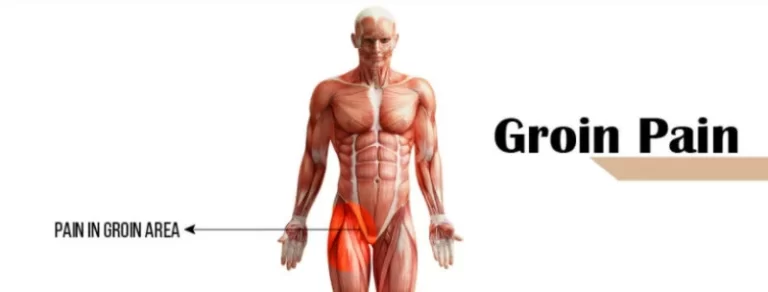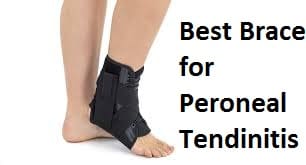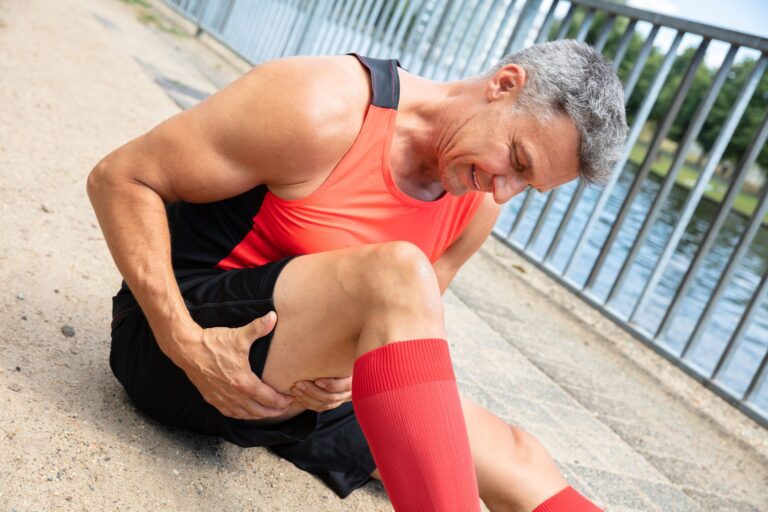Arm muscle strain
Table of Contents
What is an arm muscle strain?
- An arm muscle strain is caused by excess strain on the shoulder due to overuse. The most common sign of an arm muscle strain is a pain in the above elbow, which can lead to bruising, muscle spasms, or loss of mobility and strength.
- Some sports activities like swimming, tennis, or football require repetitive motion of the bicep in the shoulder or elbow which can lead to arm muscle strains.
- Specifically, A triceps muscle strain is a damage to the fibers of the muscle group on the back of the upper arm. It’s also known as a pulled triceps muscle and a triceps muscle rupture.
- Triceps strains are also caused by repetitive strain or overuse. This includes performing a pushing’ motion away from your body, for example, press-ups or a bench press’ whilst toning.
- Physiotherapy can help to reduce symptoms of an arm muscle strain.
Where is the arm muscle located?
Anterior compartment

- Origin:
- Short head: coracoid process of the scapula.
- Long head: supraglenoid tubercle
- Insertion:
- Radial tuberosity and bicipital aponeurosis into deep fascia on medium a part of the forearm
- Artery:
- Arteria brachialis
- Nerve:
- Musculocutaneous nerve (C5–C7)
- Actions:
- Flexes elbow,
- Flexes and abducts the shoulder
- Supinates radioulnar joint within the forearm
- Antagonist:
- Musculus triceps brachii muscle
Coracobrachialis
- Origin:
- Coracoid process of scapula
- Insertion:
- Anteromedial surface of humerus distal to the crest of the lesser tubercle
- Artery:
- Brachial artery
- Nerve:
- Musculocutaneous nerve (C5, C6, and C7)
- Actions:
- Adducts humerus, Flexes the arm at the glenohumeral joint
Brachialis
- Origin:
- Anterior surface of the humerus, particularly the distal half of this bone
- Insertion:
- Coronoid process and therefore the tuberosity of the ulna
- Artery:
- Radial recurrent artery, arteria brachialis
- Nerve:
- Musculocutaneous nerve (C5-C7) and nerves radialis (C5, C6)
- Actions:
- Flexion at elbow
Posterior compartment
Triceps brachii:
- Origin
- Long head infra glenoid cyst of the scapula
- Lateral head above the radial groove
- Medium head below the radial groove
- Insertion
- Olecranon process of ulna
- Artery
- Deep brachial arterial, posterior circumflex humeral arterial( long head only)
- Nerve:
- Radial nerve
- Actions
- The long head extends, Extends shoulder, adducts arm, Extends forearm
- Antagonist
- Biceps brachii muscle
What is the cause of arm muscle strain?
- An acute arm muscle strain is one time your muscle tears quickly and unexpectedly. Muscle tears will be due either to injuries or trauma. this will respond to
- Not warming up properly before physical exercise
- Poor flexibility
- Poor exercise
- Overexertion and fatigue
- Weakness
- Acute injuries are generally the result of a single traumatic event and affect a macro-trauma to the muscle. There’s an articulate link between the cause and noticeable symptoms. They do contact sports similar to swimming, football, and tennis because of their dynamic and high collision nature. Moving or rotating the elbow in an unusual or unfamiliar way can lead to strain.
- Overuse ( chronic or exercise-induced injuries) is subtler and generally done over a longer period. They result from repetitious micro-trauma to the muscle. Diagnosing is more challenging since there’s a less noticeable link between the cause of the injury and the symptoms
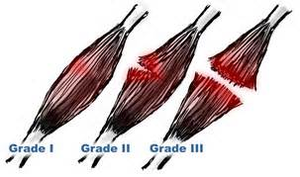
Arm muscle strain is classified into three grade
- Grade I: Mild strain with partial tearing. Pain is typically mild.
- Grade II: Moderate arm strain where more muscle fibers are torn. You could happen some muscle weakness as well as mild to moderate pain.
- Grade III: Most severe type of arm strain.
If you have a grade 3 tear or strain, you may require surgery to repair muscle strain.
Signs and symptoms
Rely on the open intensity of the injury.
In a delicate arm, muscle strain could feel slightly stiff, but still versatile enough to be used.
- Pain or tenderness over the arm muscle
- Snapping or popping sensation in your arm
- Swelling and bruising in your arm muscle.
- Limited movement of the arm muscle
- Arm muscle spasms
- Muscle weakness
- Muscle stiffness
Arm muscle strain complications
- Generally, complications with an arm strain are rare. Complications that can occur include:
- Decreased range of motion
- Reduced muscle strength
- Pain and infection — if surgery is required to repair a strain
Risk factors
- You are more likely to sustain a bicep strain risk if you:
- Participate in sports that require constant movement from the bicep, elbow, and shoulder. Examples are softball or baseball
- poor circulation
- Have a previous shoulder or upper-arm injuries
- Do not warm up before sports activities or exercises
Arm strain diagnosis
Your doctor can diagnose an arm strain during a physical examination.
- Medical history: to decide when symptoms began and potential activities that might have caused the sprain or strain.
- The doctor will also look for swelling on the upper arm that indicates a bicep tear, triceps tear, or strain. to confirm your diagnosis, your doctor may also instruct an X-ray or MRI.
- X-rays will provide a two-dimensional image of the overall structure of your upper arm, elbow, and shoulder. They help identify instability, avulsion fractures, abnormal bone shapes, or other problems.
- CT scans and diagnostic ultrasounds may be used to look internally at muscles and tendons.
- MRIs will provide more information and will help to evaluate the soft tissues in and around your triceps muscle. They can identify tendon or ligament damage and can help to determine the extent of your injury, the grade of your tear or inflammation, as well as other similar conditions.
Assessment
Subjective assessment
- History with associated symptoms
- Mechanism of injury
- Inciting trauma-direction and extent of injury force
- Repetitious trauma- defective postural-related injuries
Observation
Observation Strain injuries of the arm may present with an obvious deformity similar to a bulge or defect in the muscle belly.
Palpation
- Tenderness
- Swelling
Treatment
Medical Treatment
Arm muscle strains infrequently require surgery and still may be necessary for a complete rupture.
For immediate
- Nonsurgical, Conservative treatment maximum muscle strains do not demand surgery if the muscle is fully damaged doctors suggest surgery If there is a partial gash also the athlete can replace when they are effortless and have normal strength and movement. this generally occurs following anywhere from many weeks to many months of significant treatment and therapy. When the muscle is fully damaged, the athlete may advantage from surgical repair. e tone- care of a muscle strain.
- Some therapists suggest avoiding inimical pain medicines that can extend your threat of bleeding — similar to over-the-counter (OTC) medicine (naproxen sodium (Aleve) aspirin and ibuprofen (Advil, Motrin IB), — during the first 48hours after a muscle strain. Acetaminophen (Tylenol) and others can be helpful for pain relief during this period. A
- Physiotherapist can help you to increase the strength and stability of the injured joint or limb. Your doctor may suggest that you stabilize with a brace. For some muscle injuries, arm muscle sprint surgery may be called.
To prevent swelling and pain as first aid by following RICE principal
- R- rest
- I- ice for cooling
- C- compression tapping and splinting
- E- elevation
the R.I.C.E approach

-Rest. Avoid activities that cause pain, swelling, or discomfort. don’t avoid all physical activity.
-Ice. though you are seeking medical facilities ice the world right away. Use an associate degree ice pack or slush tub of ice and water for15 to 20 minutes every time occasion anytime and repeat every 2 to 3 hours. In contrast, you are awake for the primary few days once the injury.
-Compression. to assist stop swelling, compress the world with an associate degree bandage till the swelling stops. do not wrap it too tightly otherwise, you might hinder circulation. Begin wrapping at the top farthest from your heart. Loosen the wrap if the pain increases, space becomes numb or swelling is going on below the covered area.
-Elevation. Elevate the burned space on top of your heart’s extent, particularly at midnight, that permits gravity to assist scale neck swelling.
Physiotherapy treatment
The aim of activity treatment is
- Relieve arm muscle pain
- Reduce muscle swelling
- Increases arm muscle strength.
- Improve full mobility of the ligament and corresponding joint
- Restore patient’s confidence
- Restore the patient’s whole functional activity
Acute stage
Phase one- one to two weeks after injury
- Physiotherapy rehabilitation can be started after 48 hours of injury, For the first few days give an electric modality give to relieve swelling and pain
Electrotherapy
- Ultrasound
- Ultrasound has been used for tissue healing
- Increases blood circulation and mobility.
- To reduce swelling and pain
- Cryotherapy
- Inflammation and swelling can be reduced by applying cryotherapy in form of ice packs, and cold water baths to the affected area. Continuous application of colds several times a day for 15-30 minutes at a time is recommended.
- TENS
- Trans-cutaneous electrical nerve stimulation (TENS) may be able to help reduce pain and muscle spasms.
First few days
- Ice pack,
- Electrotherapy
- Active exercise
chronic stage
Phase two- after 3 to 12 weeks
strengthening and stretching exercise
Anterior compartment
1)Bicep curl (self-applied resistance):
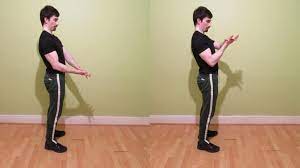
Curl one arm toward your shoulder while at the same time stretching to push it back down with your other arm.
Compress your biceps at the top of the rep and hold the compression for another.
Lower your hand back down to your sides while simultaneously trying to push it back upward with your spare arm.
Switch arms and 3-5 sets of 10-15 repetitions per arm.
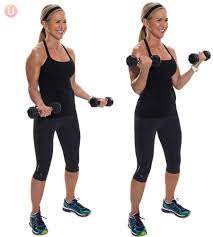
2)Static arm curl
Hold a pair of weights by your sides. Curl one weight up — so that your elbow is flexion and put down and hold it there.
Immediately perform 5 regular ( full range of movement) curls with your other arm.
Switch over so that the arm that was working isometrically is now doing curls.
Repeat this process two further times so that each arm has done 10 ringlets and two lots of 5-alternate holes.
Perform 3-4 sets in totality.
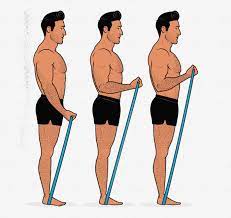
3)Single Arm Resistance Band Bicep Curl
Pick a resistance band, place it under your feet from one side and hold the other side tightly with your right hand.
Stand upright, and keep the band tight or loose adjusting to your strength.
Keep your elbows straight and attach to your sides. That’s the starting position. Now, pull the band toward your shoulders until your bicep muscles got fully attached.
Pause for a sec, and then bring your arm back to the rest. That’s one repetition. Do as many reps as you can.
Recommended 3 sets of 10 reps each. Avoid moving your elbows back while curling your arm, as it will make your exercise easier and less effective.
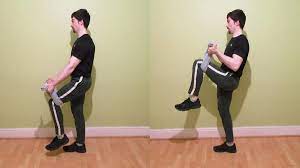
4)Towel curl
Stand up straight and lift one leg. put down a towel under that leg and hold the ends of the towel in your hands.
Curl the towel toward your chest by flexing your elbow. Keep lifting until your forearms and biceps make touch Hold the contraction for a second and then back down your leg.
Perform 3-5 sets of 20-50 reps.
5)Door frame holds
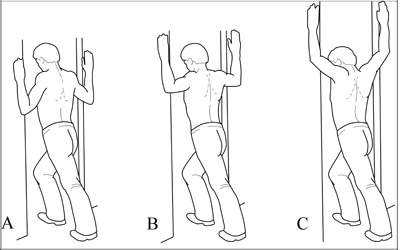
Stand in the middle of a door frame. Turn sideways so that you are facing one side of the door frame.
Grab the door frame with one hand (two if you are weaker) and shuffle your feet forward.
Band your torso back so that your elbow is fully extended. Pull yourself near the door frame by flexing your biceps.
Keep going until your forearms press right up touching your biceps. Hold this contract for 30 seconds, and then repeat with your other arm.
Do 3-5 sets per arm.
Posterior compartment
1)Overhead extension
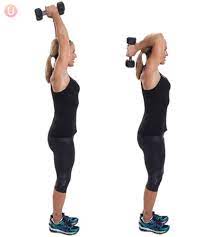
Begin standing with your bottoms in a slight split posture, with the left bottom exactly just behind the right and the legs about hips- spread apart. Weight should also be distributed between both bases. relax the knees and be sure that the core is joined so that you maintain good posture throughout the movement.
You can perform this exercise with one dumbbell, cupped in both hands so the palms in front of the ceiling, or a dumbbell held in each hand. Alternatively, you can use a resistance band by standing on one end and holding the other ends in your hands behind your back.
Lift the dumbbell directly above. Be sure that the head stays lined up over the chest, the core remains joined, and the shoulders are relaxed.
Extend both arms completely, also exhale and slow lower the lading down, getting the weight behind the head by bending at the elbows. Be sure the chest stays aligned over the hips, and the back doesn’t arch.
Inhale and reverse the move once you reach a 90- degree bend at the elbow or slightly beyond, lifting the weight back to the starting position. The weight shouldn’t touch the back of the head when it’s in its lowest position.
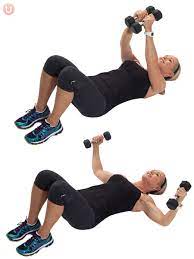
2)Chest fly
lie flat on your back on a flat diagonal bench. Place your feet firmly on the floor beside the bench. Your head and the back should stay firmly pressed to the bench throughout the activity.
Ask a person to hand you the 2 dumbbells, or gently pick them up from the floor and grasp 1 in each hand.
Lift arms above the head so they’re extended but not laid off. There must be a slight bend at your elbow and your palms and dumbbells should be fronting each other.
Inhale and slowly lower dumbbells in a curve move until they’re in line with the chest. Your arms will be extended to the sides but not let off. Don’t put your arms lower than your shoulders.
Exhale and slowly press the dumbbells up in the same curve move.
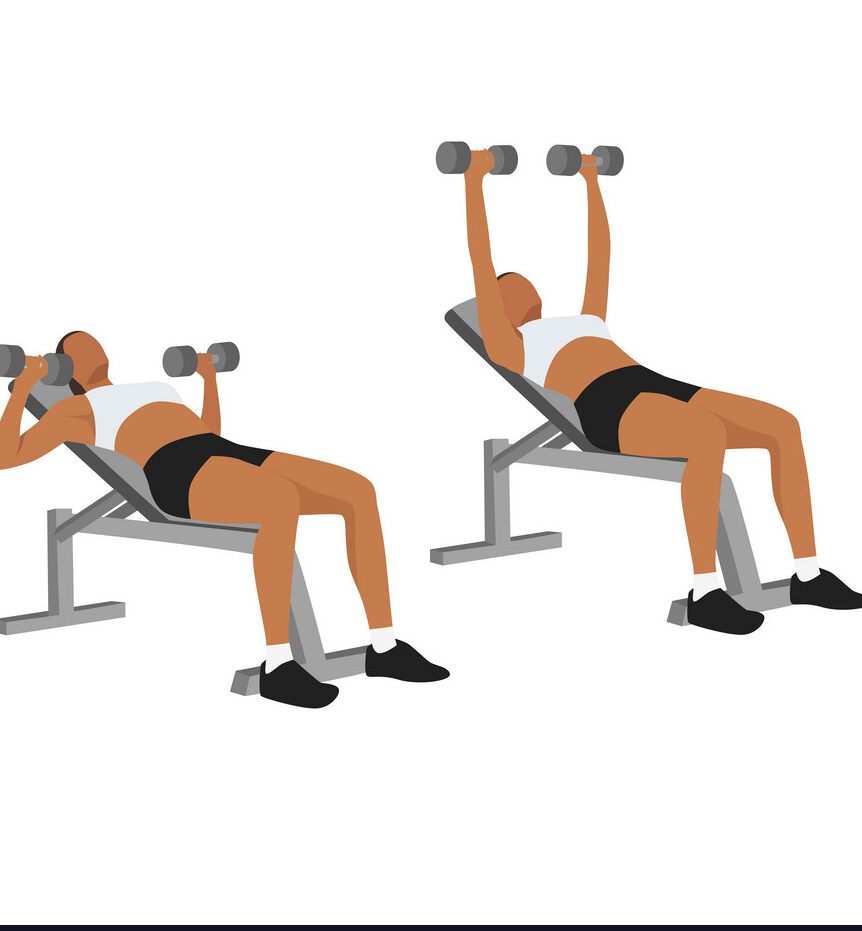
Perform 10 – 15reps. Rest. Do 3 sets total.
3)Chest press
-Lie down on the floor, bench, or mat with your knees slightly bent, feet on the floor.
-Grab the dumbbells and press them on top of you, elbows slightly bent.
-Pull the dumbbells near your chest.
Complete 3–6 sets of 4–8 reps.
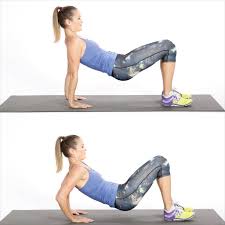
4)Triceps dips on the floor
Performing Triceps Dips on the Ground
lie down on the floor with your back facing down and your hands directly under your shoulders.
Extend your bases in front of you so your legs are slightly bent.
Sluggishly curve your arms as you lower your upper body down, and at the same time move your butt towards your feet.
So the relaxed isolation on the triceps is repositioning your upper body and butt in a down and forward movement. Keep your back is straight on going down.
Push your body up to back to the start position
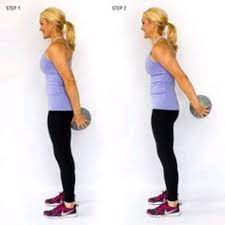
5)Triceps pulses
Start by gripping a dumbbell in both hands. with your arms swing beside your body.
Stand tall with your feet either together or shoulder-width apart so that your body is letterhead.
Keep your head facing ahead and your neck in alignment with your spine.
Twist the dumbbells so that your palms are looking behind you.
Push your palms back until you feel your triceps stretch.
Keeping that pressure on your triceps, perform a pulsating movement. focusing on working your triceps.
Repeat for 20- 30 pulses.
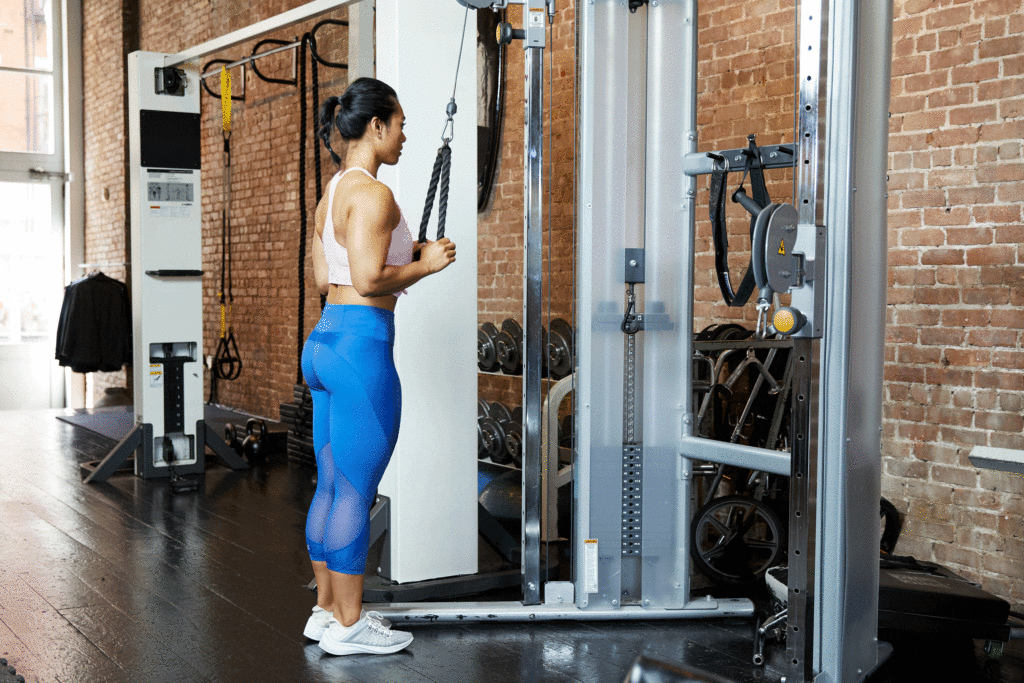
6)Triceps push-downs
Grab hold of both sides of the resistance band with both hands.
Maintain proper posture by holding your chest up and squeezing the shoulder blades together.
Pull the band down until the elbows are full extension while adapting for the increase in resistance as the bands lengthen.
Hold on to your elbows tucked, and resist outward flare while reaching this last position.

7)Push up
Start this exercise in a high push-up position. Lower your body up to your chest close to reach the ground.
Push back up and, at the same time, rotate one side of your body raising. Raise your arm toward the ceiling.
Hold this position for seconds, and then back to your starting position.
Alternate sides with each repetition.
Strengthen Your Upper Body and Prevent Injuries
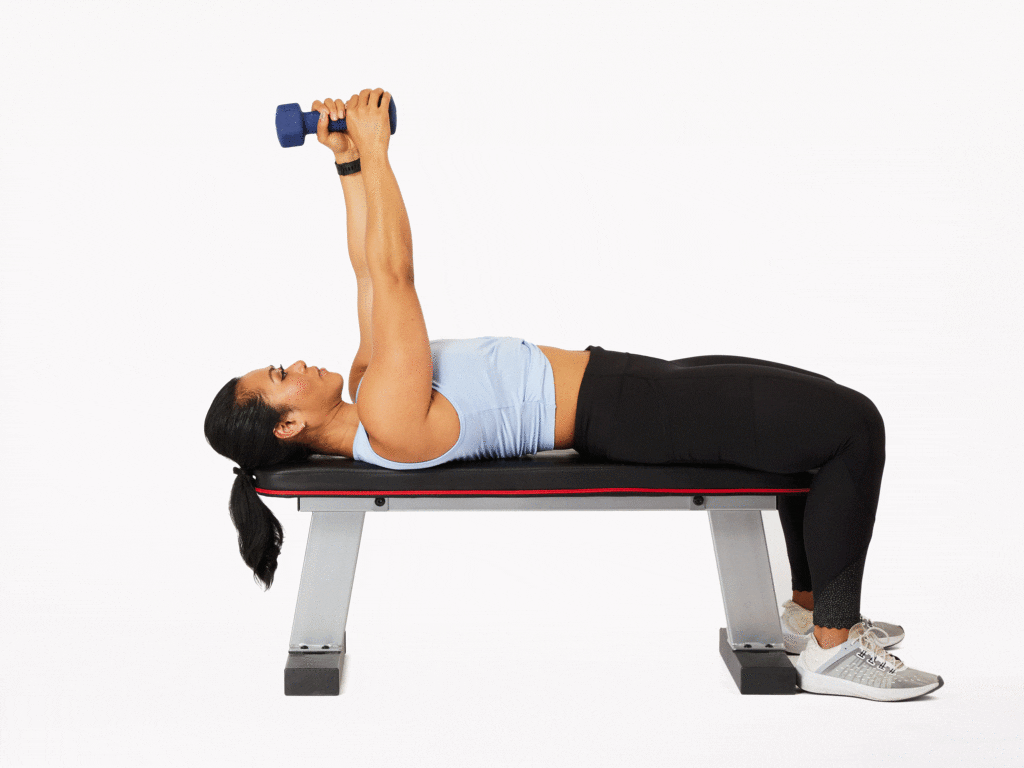
8)Skull crushers
Lie face up on a flat bench. All body must on the bench, except your lower legs. Your knees are bent and your feet are a touch on the floor.
Arms are extended above the chest, elbows shoulder-width apart( not locked), and both hands are gripping one end of a dumbbell.
Flex your elbows and lower the weight down near the top of your head. Your upper arms should remain fairly vertical to your body. This keeps the pressure on the triceps versus shifting it to the shoulders.
Hold up lowering the weight behind the head. The bottom of the dumbbell head should be around in line with the bench’s top, or even a little higher if this feels too heavy,.
Reverse the movement until the weight is above the chest in the original starting position. Keep from locking the elbow to maintain pressure in your triceps muscle.
Repeat.
Preventive measures
- warm-up before some exercise or sporting activity
- Stretch after exercising or playing sports
- Avoid immediate intense strength training and build strength gradually
- Do regular stretching and strengthening exercises for your sports activity, fitness, or work exertion, as a part of your overall physical activities
- An exercise program can help to minimize your danger of muscle strains.
- Try to be in a shape to play your sport; do not play your sport to get in shape.
- If you have a physically demanding occupation, regular exercise can help to help injuries.
- Follow a healthy diet and an exercise program to maintain a healthy weight. The overweight can put added pressure on the muscles, making muscle strains again probable to do.
FAQ
What does an arm muscle strain feel like?
The most common symptom of a bicep tear or strain is pain in the upper arm, which may lead to bruising, muscle spasms, or loss of mobility and strength.
Typically, nonsurgical treatments like non-steroidal anti-inflammatory medications and rest, and ice can help provide relief from your symptoms.How long does it take for arm muscle strain to heal?
typically, discomfort from a strained muscle will last between 3 to 6 weeks. On the opposite hand, recovery for more severe muscle strains can take several (6 to 12) weeks.
Can an arm muscle strain heal on its own?
Most people can recover their muscle strain by resting and using at-home treatments like ice and over-the-counter medicine.
If you are feeling pain for a few weeks after your injury or have severe symptoms, see your healthcare provider or physiotherapist.Should I stretch a strained muscle?
Don’t stretch!
While it’s going to seem counterintuitive, stretching a strained muscle only makes it worse. Your best bet involves avoiding any movement that agitates the affected area and still rest until the pain subsides.Does ibuprofen help heal muscle strains?
Even over-the-counter non-steroidal anti-inflammatory (NSAIDs) like ASA and ibuprofen (the generic name for Advil) have been found to delay the eventual healing of muscle, tendon, and ligament injuries.

